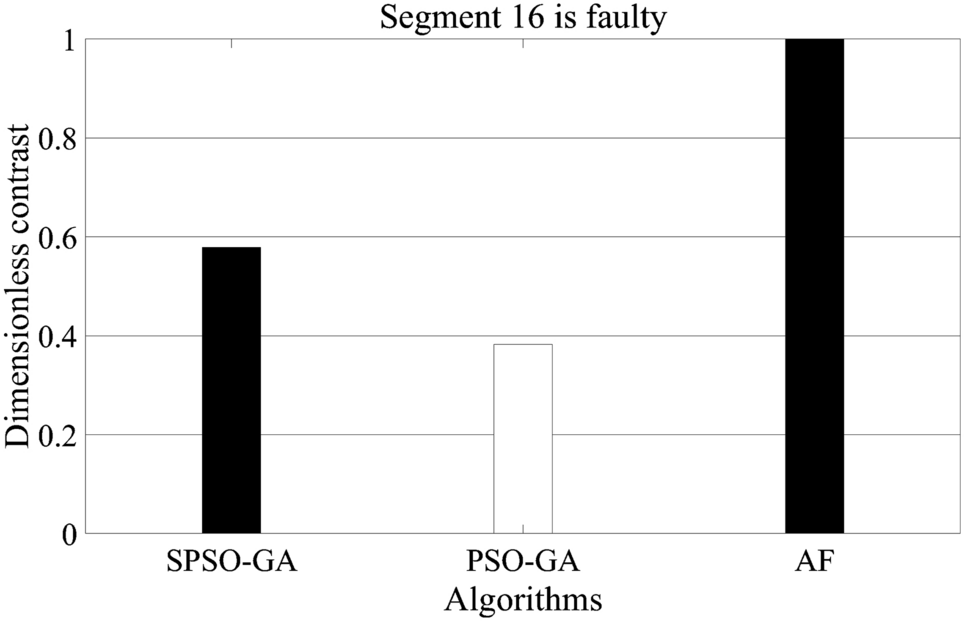In an article published in the journal Nature, researchers addressed fault location in complex distribution networks with integrated distributed generation (DG). They introduced a new algorithm, the successive particle swarm genetic algorithm (SPSO-GA), which combined particle swarm and genetic algorithms for enhanced accuracy and speed. Tested on an IEEE33-node network, the SPSO-GA demonstrated superior performance in fault detection, rapid convergence, and stability compared to existing algorithms.
 Iteration speed comparison. Image Credit: https://www.nature.com/articles/s41598-024-61306-w
Iteration speed comparison. Image Credit: https://www.nature.com/articles/s41598-024-61306-w
Background
The distribution network serves as one of the foundations of the power system, marked by its intricate structure, numerous devices, and susceptibility to failures. The integration of DG has transformed traditional networks into multi-power structures, rendering conventional fault location methods inadequate.
Existing algorithms, including matrix-based and synchronous vector approaches, offer some solutions but suffer from limitations such as dimensional disasters and equipment cost constraints. Intelligent algorithms like particle swarm optimization (PSO), GA, and artificial fish swarm algorithm (AF) have shown promise but often face challenges like local optima and slow convergence.
This paper sought to bridge these gaps by introducing a novel approach, SPSO-GA. By combining the strengths of PSO and GA while addressing their limitations, SPSO-GA aimed to achieve high accuracy, rapid convergence, and fault tolerance in fault localization. Using the IEEE 33-node distributed distribution network as a test case, this study compared SPSO-GA with PSO-GA and AF to assess its performance across various metrics. Through this exploration, the paper aimed to advance fault location techniques in distribution networks, offering more robust and efficient solutions for real-world applications.
Distribution Network Fault Location Rules
The distribution network fault location rules revolved around encoding the state of each feeder segment using binary code, where one represented a fault and zero indicated normal operation. With DG causing bidirectional current flows, fault detection at nodes was encoded similarly. The switch function linked switch information with each feeder segment, accounting for connections in networks with DG. This function divided the network into upstream and downstream parts based on the state of the switch and power supply connections.
The fitness function, essential for fault prediction, compared the ideal state values with actual values reported by feeder terminal units (FTUs). It included an anti-misjudgment weight coefficient to address multiple potential solutions, ensuring the closer the fitness function value is to zero, the more accurate the fault location. This approach enhanced fault detection accuracy by leveraging binary encoding, switch functions, and fitness evaluations.
Fault Location Algorithm
The distribution network fault location algorithm utilized a PSO approach, which mimicked the foraging behavior of birds. Traditional PSO algorithms faced challenges with speed updating, often resulting in slower convergence and suboptimal performance. To address this, the "dual structure coding of particle position" method was introduced, enhancing the algorithm's effectiveness in both continuous and discrete space optimization problems.
Additionally, the AF algorithm was employed for comparison. Inspired by the natural behaviors of fish, such as swarming, tailgating, and foraging, the AF algorithm is optimized by mimicking how fish locate nutrient-rich areas in water. This algorithm's ability to solve binary optimization problems made it a valuable benchmark for evaluating the new approach.
To further enhance fault location accuracy, the PSO algorithm was combined with elements of the GA, including gene crossover and mutation. This hybrid PSO-GA algorithm introduced diversity among particles, improving optimization outcomes. By incorporating GA substeps with specific probabilities of crossover and mutation, the hybrid approach aimed to achieve better performance and efficiency. This method enhanced the convergence speed and fault tolerance, offering a robust solution for fault location in complex distribution networks.
Comparison of Fault Optimization in SPSO-GA, PSO-GA, and AF Distribution Networks
To evaluate the optimization abilities of SPSO-GA, PSO-GA, and AF algorithms in a distribution network, simulations were conducted on an IEEE 33-node network using MATLAB. The researchers focused on optimization accuracy, fault tolerance, and optimization speed, with each algorithm tested 200 times to ensure reliability. Optimal parameters for each algorithm were identified to enhance the comparison.
In terms of optimization accuracy, SPSO-GA demonstrated superior stability and effectiveness compared to PSO-GA and AF, particularly in locating faults across different segments. Increasing the number of particles to 30 improved the accuracy of SPSO-GA significantly, achieving 88% in some cases, while the other algorithms showed limited improvement.
For fault tolerance, SPSO-GA maintained high accuracy even with distorted information, outperforming PSO-GA and AF in challenging scenarios. The algorithm proved particularly robust in handling faults in sections with distorted data, indicating better stability.
Regarding optimization speed, SPSO-GA was more efficient than AF but took slightly longer than PSO-GA. However, considering the overall performance, including accuracy and fault tolerance, SPSO-GA emerged as the most effective algorithm. Its combination of high accuracy, stability, and reasonable speed made it a robust choice for fault location in distribution networks.
Conclusion
In conclusion, the researchers introduced the SPSO-GA for fault localization in complex distribution networks with integrated distributed generation. Compared to existing algorithms like PSO-GA and AF, SPSO-GA demonstrated superior accuracy, fault tolerance, and convergence speed. By combining the strengths of PSO and GA, SPSO-GA offered a robust solution for fault detection in real-world scenarios. These findings advanced fault location techniques, contributing to the reliability and efficiency of power systems.
Journal reference:
- Xu, W., Li, J., Yang, L., & Yu, Q. (2024). Faults locating of power distribution systems based on successive PSO-GA algorithm. Scientific Reports, 14(1), 11259. https://doi.org/10.1038/s41598-024-61306-w, https://www.nature.com/articles/s41598-024-61306-w